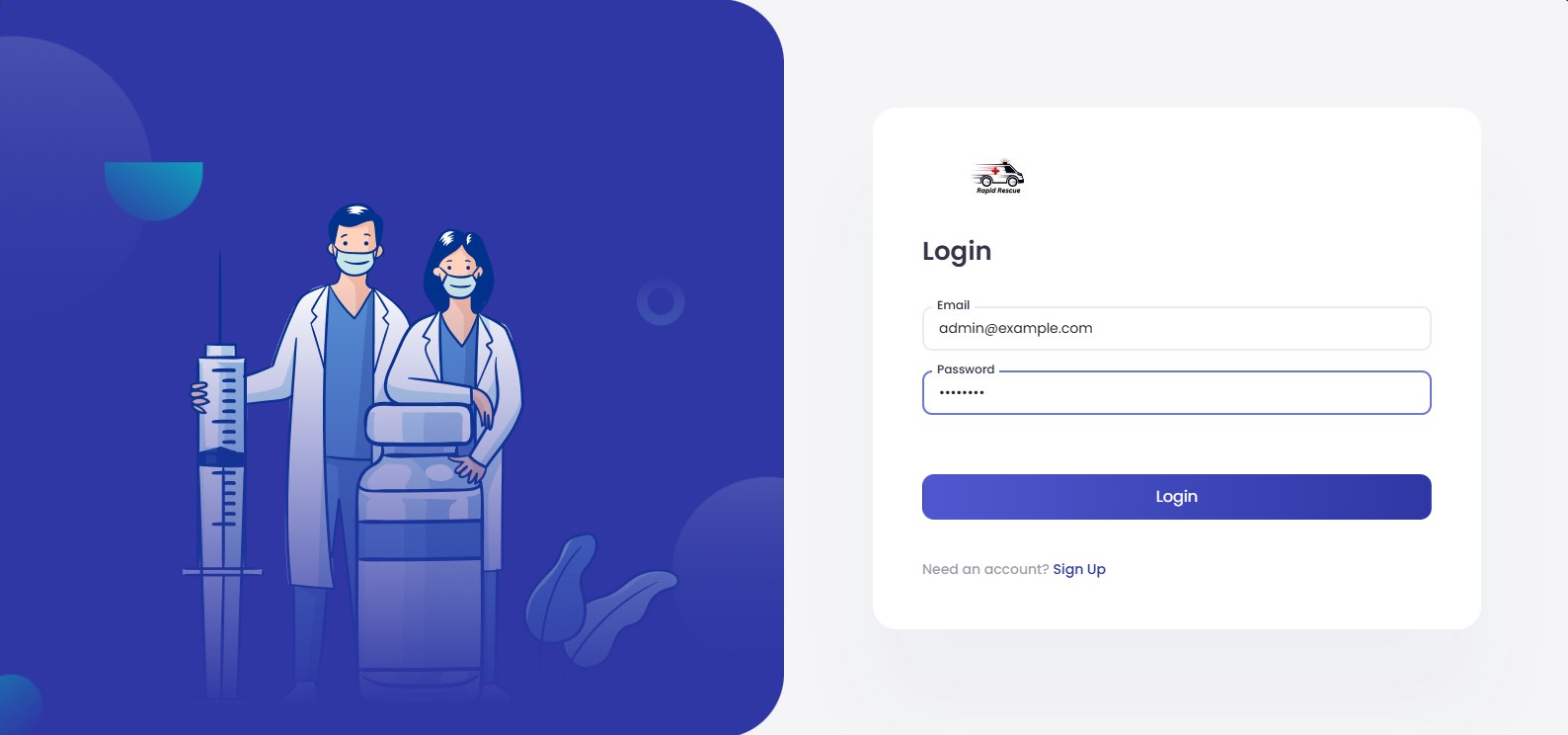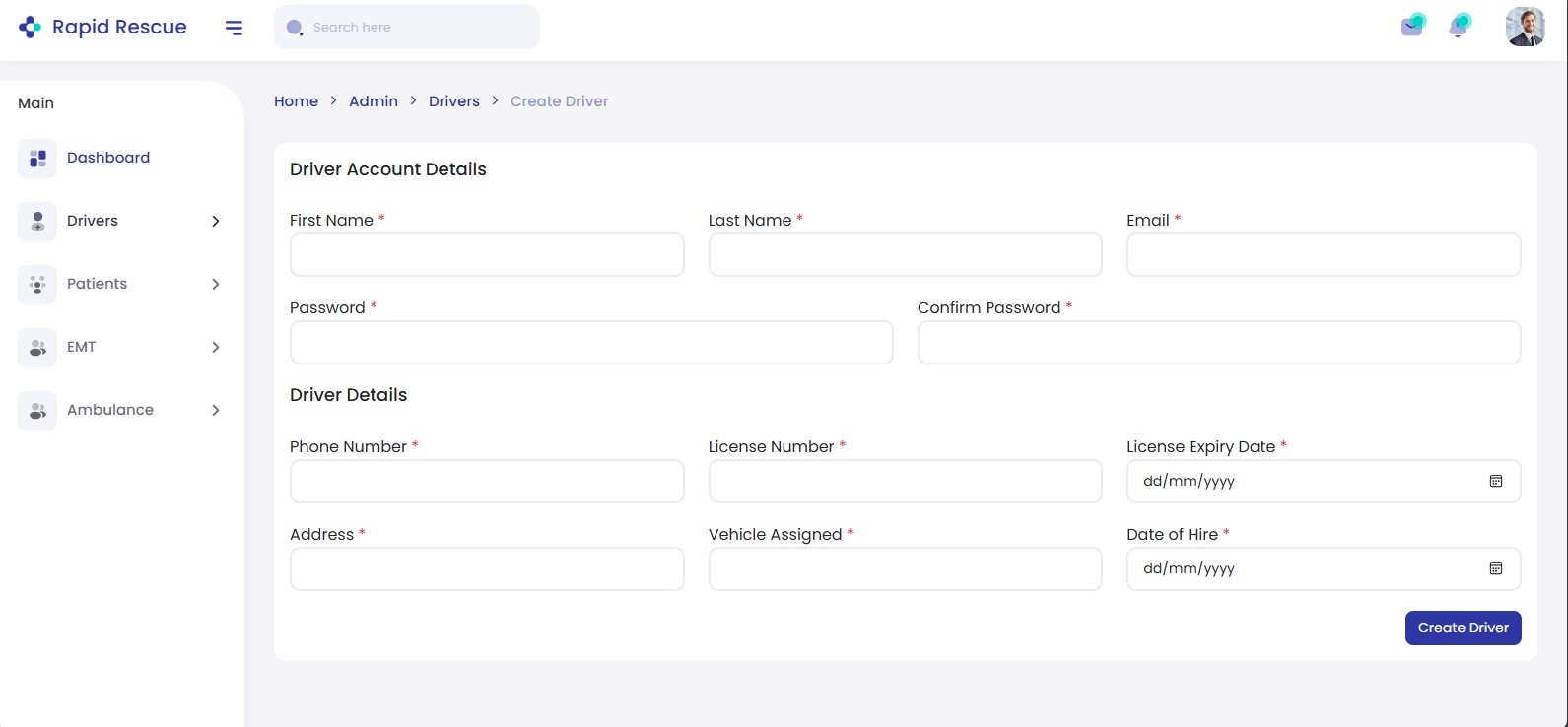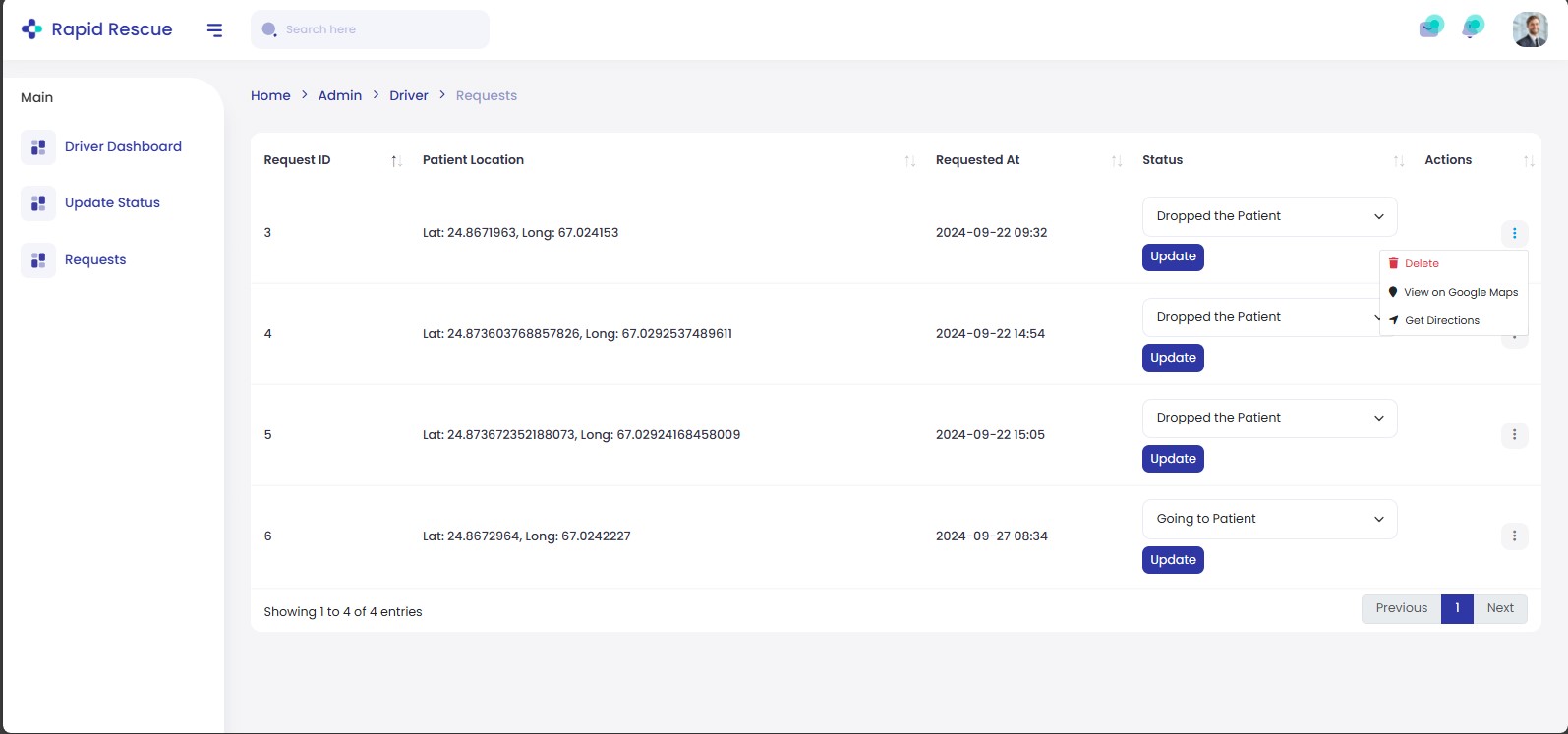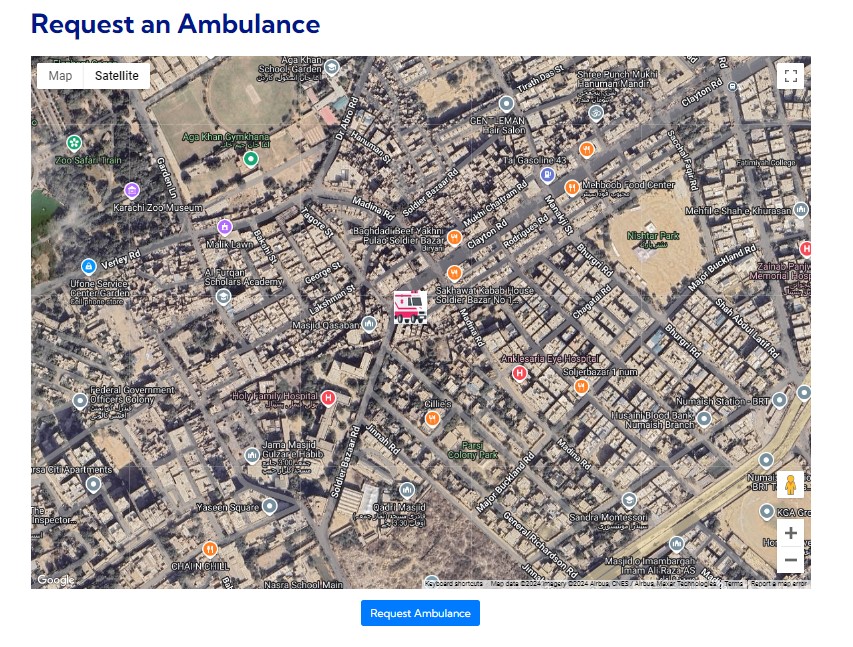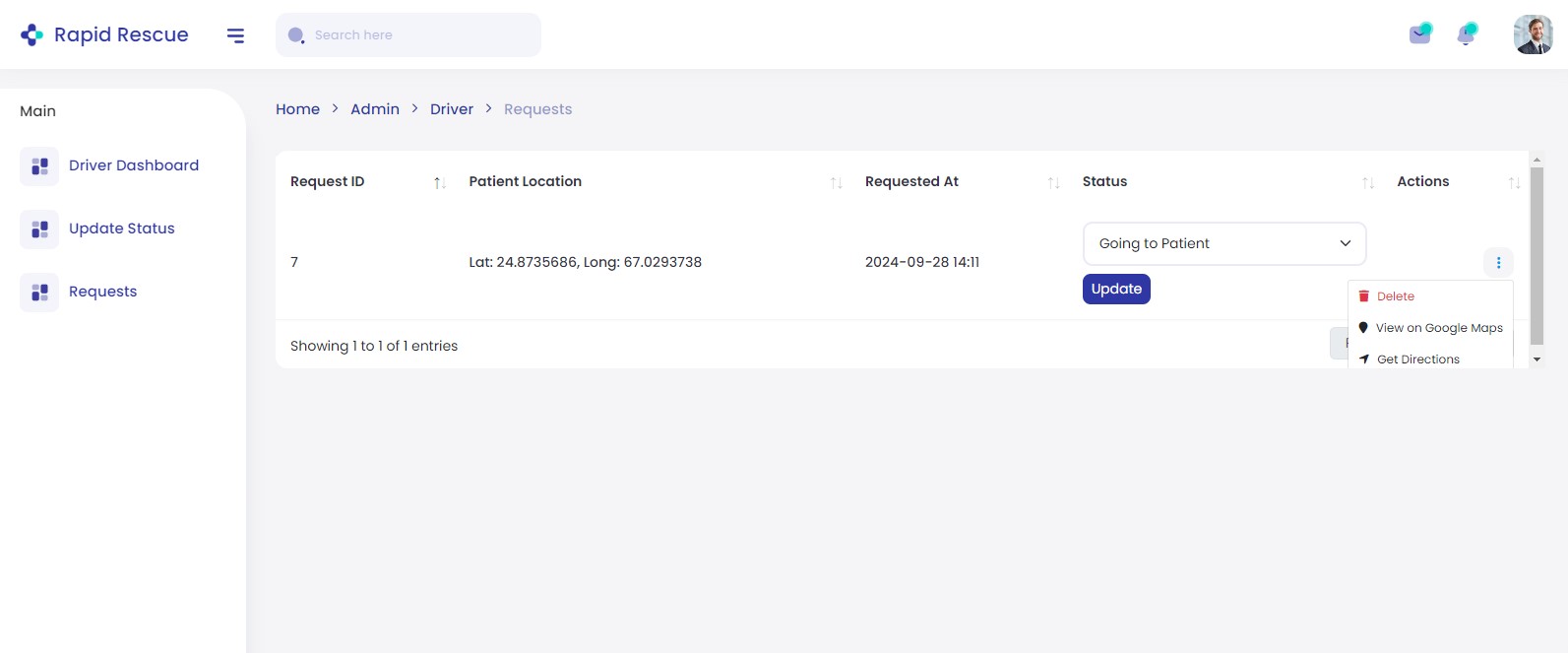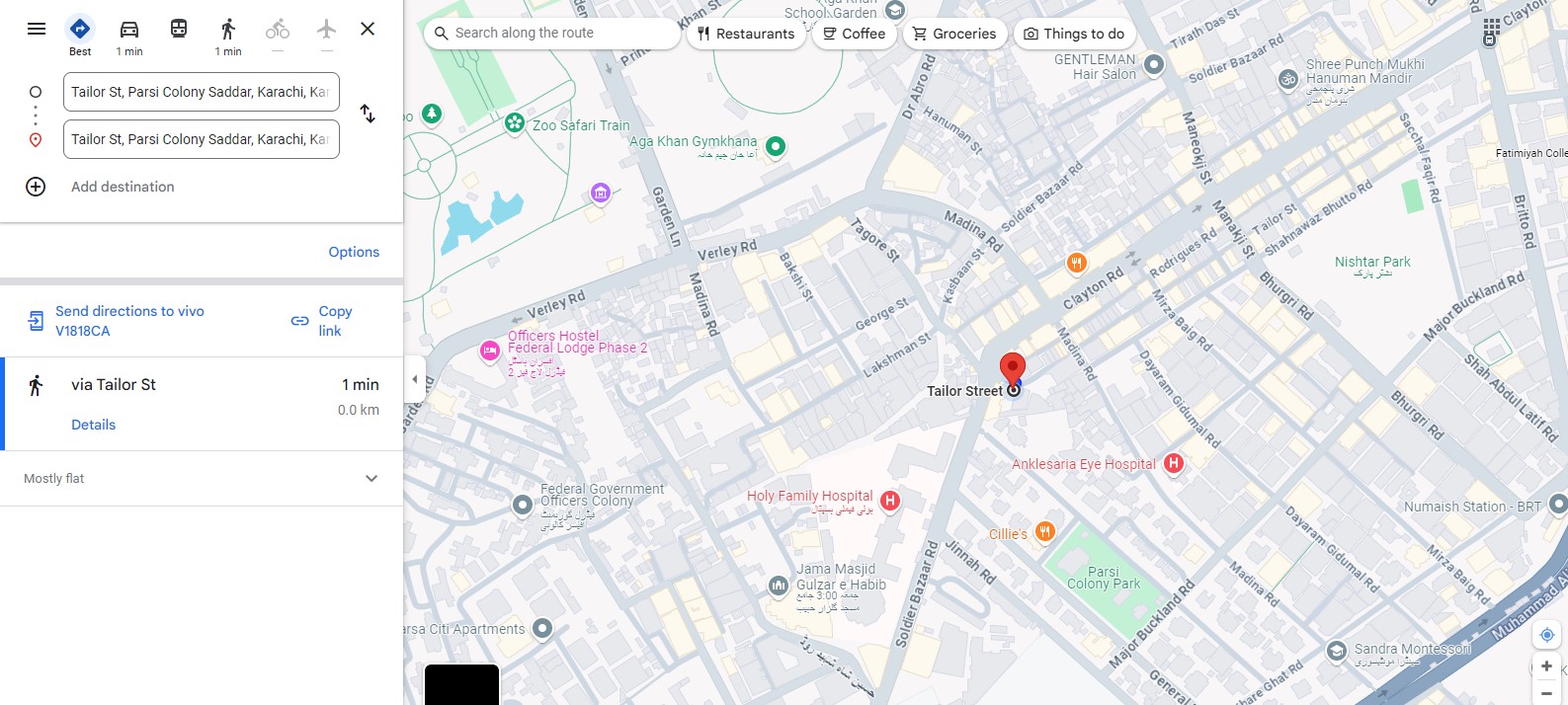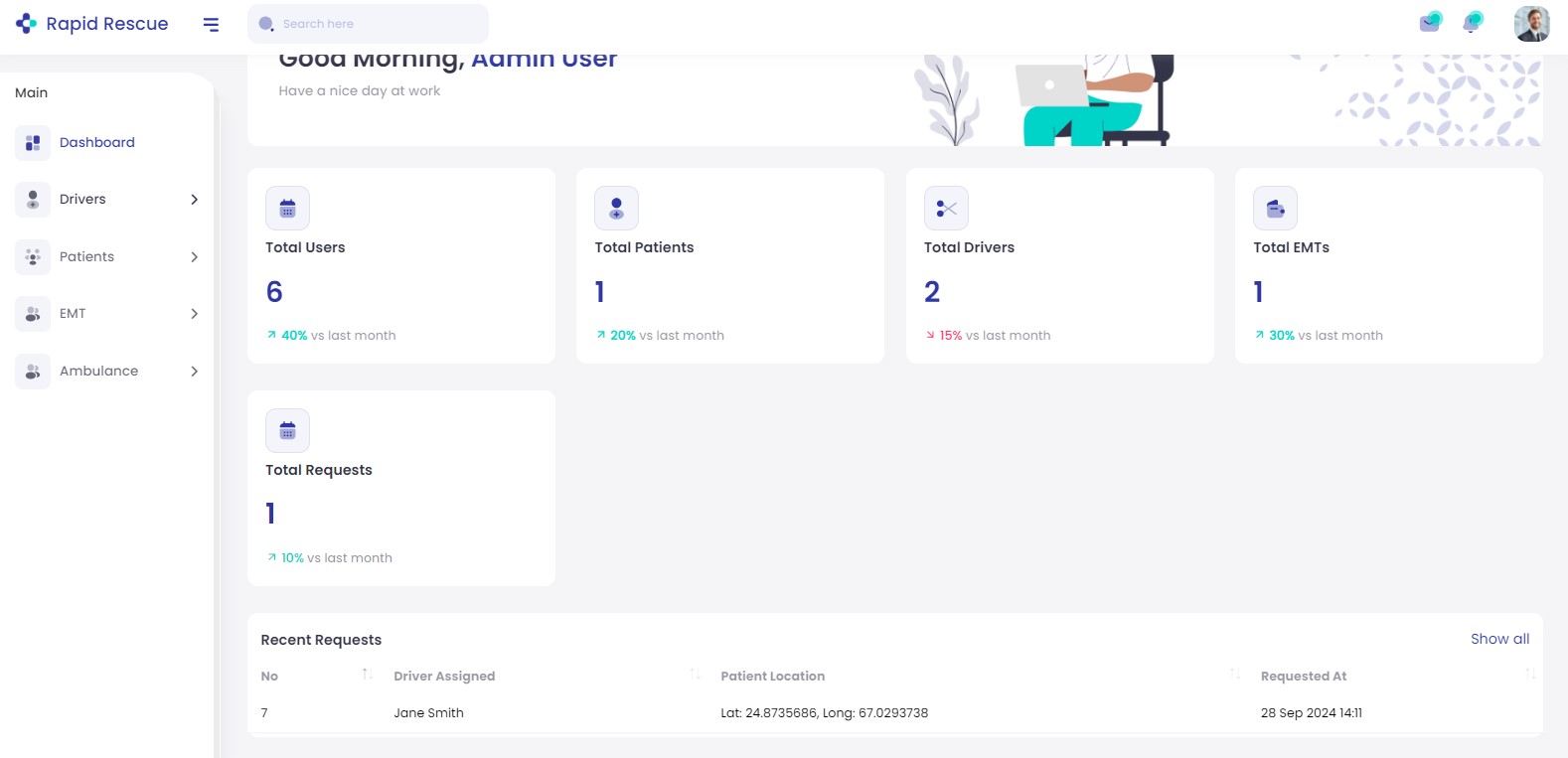RAPIDRESCUE
RAPID RESCUE is a highly interactive, responsive, and user-friendly web application designed to help users request emergency ambulance services, track their ambulance in real-time, and manage their medical profiles. It supports admins and drivers (EMTs) with dispatch systems and patient management, ensuring efficient services across all devices.
Date
September 2024
Role
Lead of the Team
[ View Code ]
The Challenge
Developing a highly interactive, responsive, and user-friendly application that meets the needs of both patients and EMTs while maintaining efficiency across multiple devices. The biggest challenge was seamlessly integrating real-time ambulance tracking, dispatch management, and medical profile handling without compromising security or performance.
The Research
Researching the best practices in emergency response systems, real-time GPS tracking, and user experience to create a platform that is easy to use for patients, EMTs, and administrators. Ensuring that the system complies with medical data security standards while providing an intuitive user interface across all devices.

The Solution
Developing a comprehensive web application that allows
users to request ambulance services efficiently, track
ambulance movement in real-time, and manage medical
profiles. The solution integrates a dispatch system for
administrators and a seamless interface for EMT drivers,
ensuring fast and reliable emergency response on any
device.
The system is designed to handle real-time communication
between users, admins, and EMTs, enhancing emergency
medical response times.
System Architecture
The Rapid Rescue system follows a robust three-tier architecture:
-
Frontend (Presentation Layer): Built
using Razor views, HTML5, CSS3, and Bootstrap 5 for
responsive design and seamless user interactions.
Backend (Application Layer): Powered
by ASP.NET Core MVC to handle business logic, user
management, and data processing.
Database (Data Layer): Managed by MS
SQL Server, which securely stores data such as user
profiles, ambulances, drivers, and emergency requests.
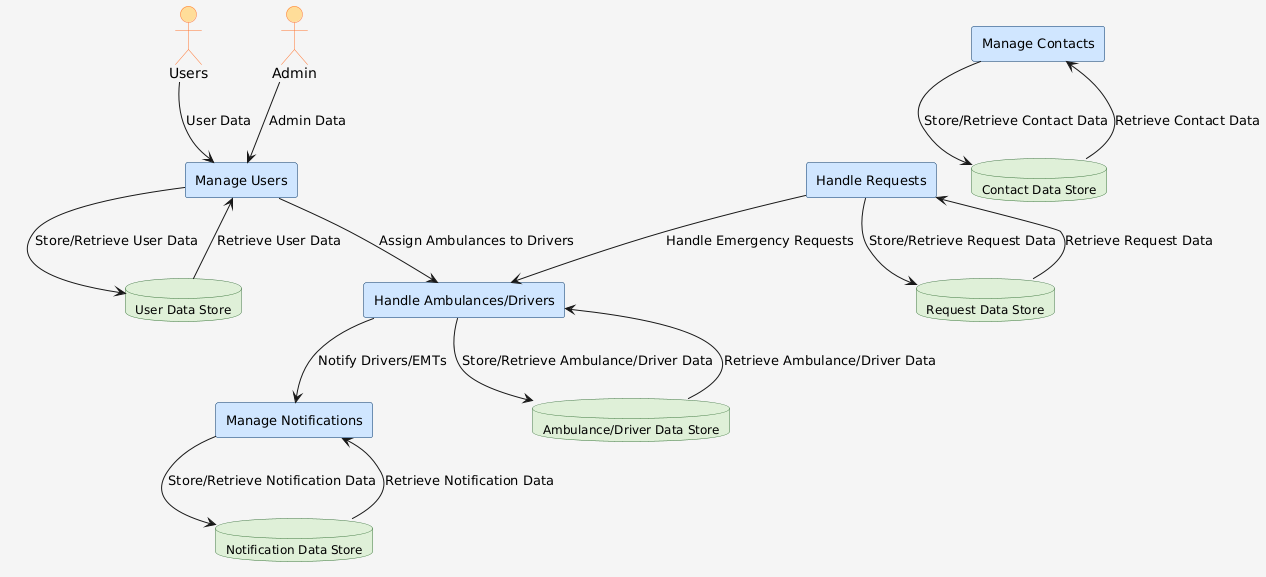
Technology Stack
Rapid Rescue uses a modern technology stack to ensure the system is scalable, secure, and responsive. Below is an overview of the tools and technologies employed:
-
Frontend: Razor, HTML5, CSS3, Bootstrap
5, JavaScript
Backend: ASP.NET Core MVC
Database: MS SQL Server
API Integration: Google Maps API for
real-time ambulance tracking
Version Control: GitHub for code
collaboration
Patient to Driver to Admin Flow
The flow begins when a Patient submits an emergency ambulance request. The system notifies the Admin who assigns a nearby Driver/EMT. The Driver is updated in real-time with the patient's location and medical details, and the Admin monitors the situation until the service is completed.
User Feedback
The system has received positive feedback from users, especially for its ease of use, real-time ambulance tracking, and efficient response times. Below are some of the key user testimonials:
-
“The real-time tracking gave me peace of mind during
a stressful situation.”
“The user interface was simple and easy to navigate,
even in an emergency.”
“I appreciated the ability to share my medical
history with the EMTs before they arrived.”
This feedback has been crucial in further refining the system for better performance and user experience.
API Integration
Rapid Rescue integrates several APIs to enhance its functionalities:
-
Google Maps API: Used for real-time
tracking of ambulances and calculating estimated arrival
times.
Status Update API: Allows drivers to
update their real-time status (e.g., “on the way”,
“arrived”, “transporting patient”).
Notifications API: Sends push
notifications, SMS, or email alerts to users and admins
regarding ambulance statuses and emergency requests.
Future Improvements
Based on current usage and feedback, the following improvements are planned for future versions of Rapid Rescue:
-
Incorporating AI-powered predictions to estimate
ambulance arrival times more accurately.
Adding multilingual support to make the system
accessible to a wider audience.
Integrating billing and insurance claims functionality
to further streamline the emergency response process.
Expanding the system to integrate with more hospitals
and ambulance services across different regions.




